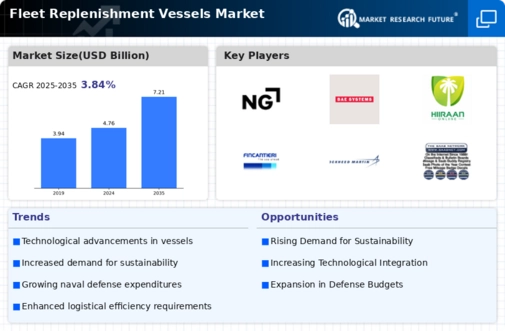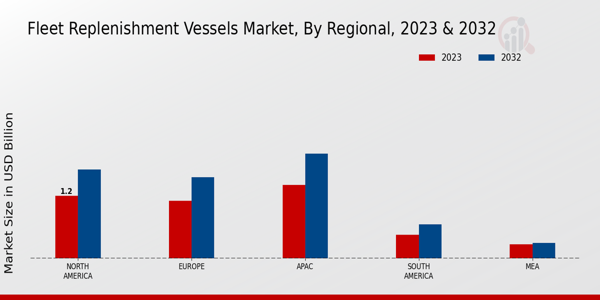The Fleet Replenishment Vessels Market is characterized by competitive dynamics influenced by a variety of factors, including technological advancements, growing maritime security concerns, and strategic partnerships among key industry players.
This market serves a crucial role in sustaining naval operations by providing logistical support, fuel, and supplies to naval fleets at sea. The competition is driven by the need for versatility, efficiency, and capability in vessel design and operation, with firms striving to develop innovative solutions to meet the increasing demands of modern naval warfare.
As nations focus more on securing their maritime borders and enhancing their naval capabilities, the Fleet Replenishment Vessels Market has seen rising investments and collaborations aimed at improving the operational readiness of naval forces globally.
Northrop Grumman has established a significant presence in the Fleet Replenishment Vessels Market, leveraging its advanced engineering capabilities and extensive experience in naval architecture.
The company excels in delivering state-of-the-art replenishment vessel designs that cater to the evolving needs of modern navies, emphasizing stealth, speed, and operational efficiency.
One of its key strengths is its commitment to integrating cutting-edge technology within its vessels, such as advanced navigation systems and automated logistics management solutions.
This enables effective and timely replenishment operations at sea, bolstering fleet readiness. Additionally, Northrop Grumman's strategic alliances and collaboration with defense agencies further enhance its competitive stance, allowing it to offer comprehensive support, maintenance, and upgrade services, thereby solidifying its reputation as a reliable provider in the market.
BAE Systems has also carved out a prominent position within the Fleet Replenishment Vessels Market, distinguished by its focus on delivering highly capable ships optimized for replenishment roles.
The company benefits from its vast experience in defense and security solutions, which informs the design and functionality of its vessels. BAE Systems prioritizes customer-centric innovation, often tailoring its offerings to meet specific operational requirements of naval forces worldwide.
The company's strengths lie in its robust supply chain management, deep engagement with clients, and commitment to sustainability in its shipbuilding practices.
Furthermore, BAE Systems is well-regarded for its integrated solutions that not only enhance vessel performance but also ensure seamless interoperability with existing naval platforms, thus contributing to the overall efficacy and reliability of replenishment missions in diverse operational environments.














